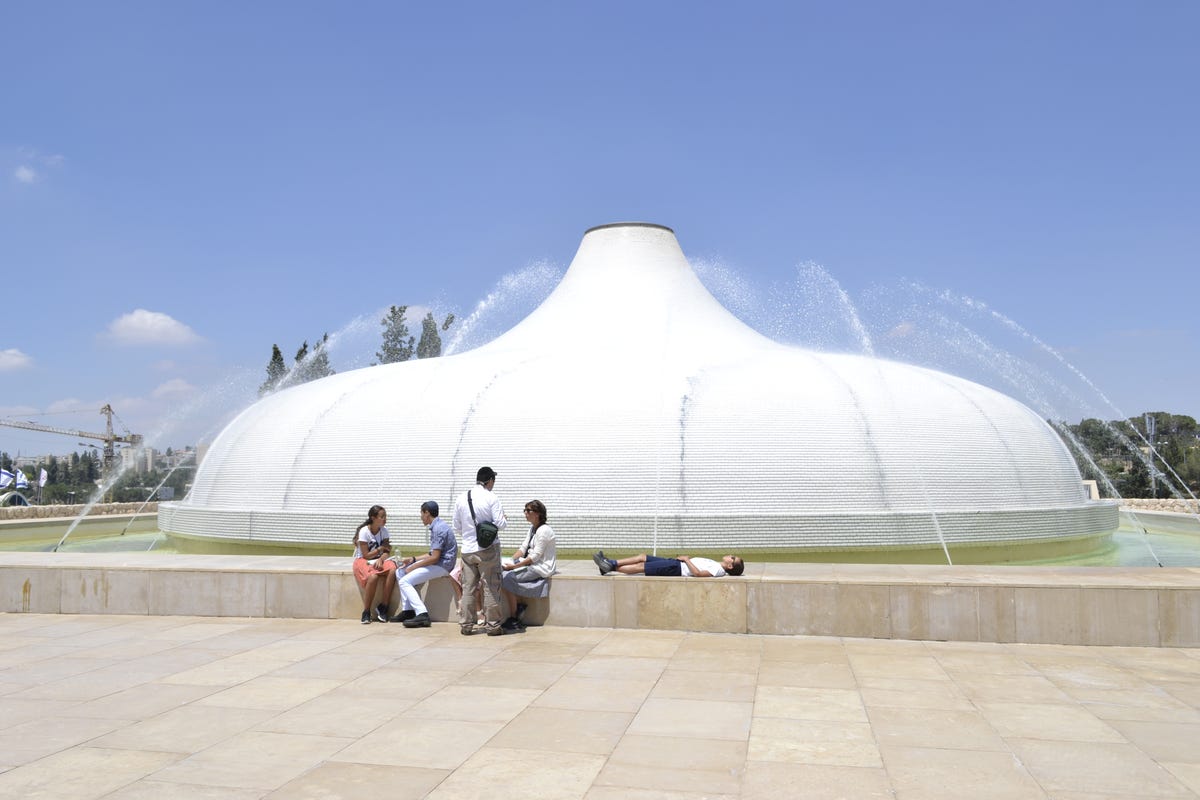In Jerusalem, preserving antiquities with tech (pictures)
CNET visited a handful of labs around Jerusalem where conservators are working to digitally preserve and analyze historical artifacts and artwork.

The Shrine of the Book
Our search for high-tech preservation of antiquities led us to the Israel Museum in Jerusalem.
The main exhibit there is the Shrine of the Book, where visitors can see some of the 2,000-year-old Dead Sea Scrolls.
Using tech for preservation
Nearby on the museum's campus, the Israel Antiquities Authority maintains the Leon Levy Dead Sea Scrolls Digital Library. There, Shai Halevi (center), the the project's photographer, creates images of the manuscripts for monitoring and preservation.
Leon Levy lab
The lab includes a custom-built spectral-imaging camera that takes detailed digital pictures of historical documents using red, green and blue lights.
A digital sea scroll
The composite image of the red, green and blue pictures creates an image like the one seen here, with pictures taken from the sides as well to capture all the wrinkles in the parchment.
Halevi at work
Here Halevi prepares to take another set of pictures of Dead Sea Scroll fragments. In all, 56 exposures are taken of each fragment to capture every detail.
A close eye on conservation
Here a conservator working in the an adjacent lab surveys a piece of ancient text. Only four conservators in the world are authorized to handle the Dead Sea Scrolls.
Moving into the digital future
Pnina Shor, a longtime IAA archeologist, is now the head of the Dead Sea Scrolls Projects, where she helps lead the efforts to add more tech to the government agency's work.
Google spurs digital wave
Google's Israel team, lead by Yossi Matias -- pictured here in the company's Tel Aviv offices -- served as a catalyst to get more museums and libraries to put their archives and art online.
The Hall of Names
At Yad Vashem, Israel's Holocaust memorial, millions of testimonials about victims are kept in books within the Hall of Names room here.
The hall's dome
The room's dome includes pictures of 600 Holocaust victims, to represent those murdered in the Holocaust.
The case of Mr. Grinman
Yad Vashem is working to connect more of its names, pictures and other files together, to reconstruct victims' lives. Here, Haim Gertner, the museum's archives division director, describes researchers' work discovering one Holocaust victim's history.
Inside the archive room
Here, Gertner shows a Nazi-created prisoner card.
Yad Vashem's digital media lab
The museum created a digital media lab focused on preserving audio and video files related to the Holocaust. Here, Yad Vashem CIO Michael Lieber (right) and Adir Barel, head of the digital media lab, discuss the race against time to save material from decades-old media formats.
High-resolution preservation
Yossi Ben-David, a digitization expert, uses a high-powered camera to create a digital copy of an heirloom family diary from the war.
A spot-on Auschwitz Album copy
Ben-David recreated the one-of-a-kind Auschwitz Album, in hopes of giving museum visitors the feeling of flipping through a historical document.
At the IAA's 3D-imaging lab
The IAA bought a 3D scanner two years ago to record pottery, flints and other excavation finds, so it can find more nuances in these artifacts. The device is now housed at the agency's offices in the Har Hotzvim industrial park.
The 3D scanner
The 3D-imaging camera, seen here, is scanning a tiny, 3,000-year-old grape seed.
Analyzing pottery
Avshalom Karasik, who heads IAA’s 3D laboratory, shows a program that analyzes 3D pottery images.
Pottery storage
Hundreds of excavations are done annually in Israel. Some of the reconstructed pottery pieces end up here, in the basement of IAA's Har Hotzvim offices.
Metal and glass labs
The Har Hotzvim offices also include labs to restore metals, glass and other materials uncovered from digs.
Antiquities meet tech
Although the Har Hotzvim offices are in an industrial park filled with science and technology companies, several aspects of the IAA offices are far from high-tech.
Tables filled with pottery shards
Many hallways are lined with long wooden tables that are filled with pieces of pottery.

